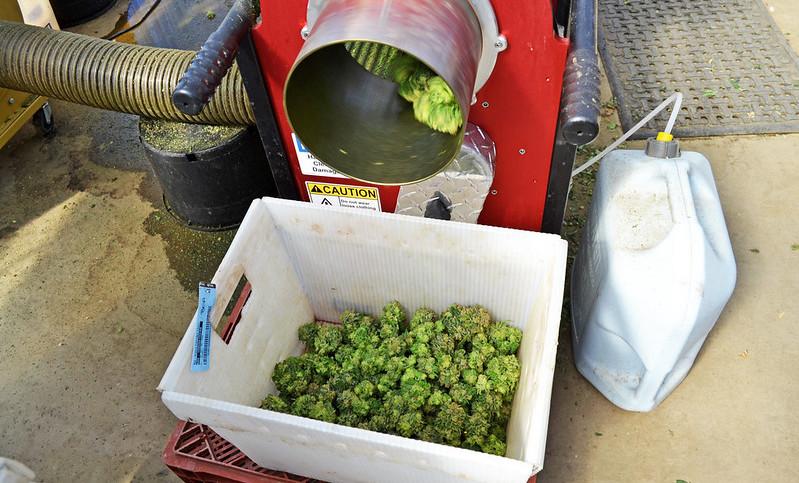
Oregon legalized medical marijuana in 1998, and in 2015 it legalized recreational use, yet policymakers still know relatively little about the impact of the latter.
A recent study by Oregon State University researchers and others shows that cannabis use has increased among college-aged Americans in states that legalized recreational use.
“Some people would be surprised that we didn’t already know this,” said David Kerr, a psychology professor at Oregon State and the study’s lead researcher. “There have been a number of studies that have found increases in adults, but not in young adults. So this is new and important information.”
The researchers found that use among those in college only increased 1% after legalization, from 20% to 21%, while use among those not in college rose 5 percentage points, from 23% to 28%.
The study, published in the American Journal of Preventive Medicine, is based on 2008 to 2019 data from the National Survey on Drug Use and Health, which conducts an annual survey on drug and alcohol use across the country. The researchers looked at cannabis use for those 18 to 23 years old. They did not single out Oregon data or analyze the reasons behind the increased use.
Twenty-three states and the District of Columbia allow recreational marijuana use, with Colorado and Washington state the first to do so in 2012. A total of 38 states and the District of Columbia allow medical marijuana use, according to the National Conference of State Legislatures.
Previous studies have been mixed on the impact of legalization on young adults, Kerr said.
He speculated that the ready availability of marijuana and growing acceptance of its use could account for the increased use.
“Substance use is very much influenced by what we think other people are doing,” Kerr said.
A report on drug use showed that in 2020, about 20% of young adults believed regular cannabis use could be harmful compared with nearly 60% two decades ago.
With increased use, there has been a rise in frequent use, though not uniformly. The latest study found among non-college students a 2 percentage-point uptick in frequent use, from 12% to 14% after legalization. They defined frequent use as at least 20 times in the past month. Frequent use did not change among college students – it remained at 7%.
They found a similar trend when looking at addiction rates or cannabis use disorder, which they defined as users having difficulty stopping or having marijuana use control their lives. Cannabis use disorder stayed the same among college students – at 10%. But rates increased among non-college participants from 12% to 15%.
“That might not be at the same level of addiction that we think about when we think about cigarettes or alcohol, but it is showing a pattern of problematic use,” Kerr said. “I think people should be concerned about that because that does mean someone is using it in a way that’s interfering with their ability to function the way that they would want to function, whether that be in school or home or work.”
Kerr said because there are fewer social consequences to marijuana use now that the study might have underestimated the increases.
The study did not account for the fact that the potency of cannabis is higher in legal states, and has increased dramatically over time, nor did it not look at the effects of overconsumption of marijuana. But Kerr said the data is still useful for policy decisions on advertising, for example, limits on the ability of minors to access marijuana and the density of retail outlets in various communities.
As with any study, this one answered some questions while showing other avenues which need to be researched. Kerr said he’d like to explore the behavioral impact of cannabis. One question he has is whether increased use of marijuana leads to decreased consumption of alcohol.
“We need to understand how these policies are actually affecting behavior,” Kerr said.
The research was funded by the National Institutes of Health. The other researchers included Natalie Levy, a Ph.D. student at Columbia University; Harold Bae, an associate professor at Oregon State; and Anne Boustead, assistant professor at Arizona State University.
GET THE MORNING HEADLINES DELIVERED TO YOUR INBOX
figure, .tipContainer, .socContainer, .subscribeShortcodeContainer, .donateContainer {display:none !important;} .youtubeContainer { position: relative; padding-bottom: 56.25%; padding-top: 30px; height: 0; overflow: hidden; margin-bottom:12px; } .youtubeContainer iframe, .video-container object, .video-container embed { position: absolute; top: 0; left: 0; width: 100% !important; height: 100%; margin: 12px 0px !important; } .newsroomSidebar {width:35%;max-width:35%;padding:10px;border-top:solid 2px black;background-color:#d3d3d3;float:right;margin-left:50px;} .snrsInfoboxSubContainer {padding:10px;border-top:solid 2px black;background-color:#d3d3d3;} .halfwidth {float:right;width:50%;max-width:50%;} .indent2Container {margin-left: 1em;margin-bottom:1em; border-left: solid 1px black;padding-left: 2em;} @media only screen and (max-width: 600px) {.newsroomSidebar {max-width:95%;width:95%;margin-left:4%} .halfwidth {float:none;width:100%;max-width:100%;} }
Oregon Capital Chronicle is part of States Newsroom, a network of news bureaus supported by grants and a coalition of donors as a 501c(3) public charity. Oregon Capital Chronicle maintains editorial independence. Contact Editor Lynne Terry for questions: [email protected]. Follow Oregon Capital Chronicle on Facebook and Twitter.

In regard to the use of substances that are criminally prohibited, the National Survey on Drug Use and Health is asking people whether they break the law and how often. The fact that more people are willing to admit using marijuana after it became legal than had been willing to admit their use back when it was a criminal offense - even young people for whom possession and use is still prohibited - is not the earth-shattering revelation that some appear to believe.
It's also worth noting that NSDUH estimates of substance use disorder are based on responses to a handful of questions in the annual survey. They're not diagnoses.
The impact of legalization is absolutely worth studying but without context, the NSDUH data are less than useful at best.
Doug McVay
Portland, OR